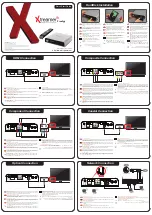
Control Loops
9-5
590 Series DC Digital Converter
Current Control
The field current loop can accept a demand directly from the plant and/or an outside field
weakening loop and forms the error signal which is the difference between demand and
feedback. The error signal is fed into a P + I compensator which produces the output of the field
loop, i.e. the field firing angle signal.
The firing angle signal is translated into a certain time delay from the mains zero cross point
(obtained via the same Phase-Lock-Loop as for the armature) and this results into a firing
command being issued to the field bridge every 1/2 of a mains cycle in steady-state.
Voltage Control
This offers the facility of an open-loop voltage control for motors which do not provide in the
nameplate the field current rating. The field voltage is controlled by the specified RATIO
OUT/IN which defaults to 90%. This is the maximum dc Volts that can be obtained for a given
ac RMS input in a single-phase rectifier, i.e. 370V dc for 415V ac supply. The specified ratio
determines directly the firing angle at which the controller operates and therefore the thermal
effects on the field resistance as well as mains voltage variations are not compensated for. It is
also worth noting that in this mode the field overcurrent alarm is not active (since there is no
current scaling) and therefore this mode is not recommended for use with supplies much greater
than the field voltage rating.
Field Weakening
The field weakening loop accepts a demand for MAX VOLTS (default 100%) and forms the
error signal which is the difference between demand and arm. volts feedback. The error signal is
fed into a Lead/Lag compensator which produces the output of the field weakening loop, i.e. the
field weakening demand. This gets subtracted from the field setpoint (default 100%) to produce
the field demand into the field current loop. A MIN FLD CURRENT parameter (default 10%)
limits the minimum level in the field weakening region.
The Lead/Lag compensator has a dc gain ("emf gain" = Kp), a lead time constant ("emf lead" =
T1) and a lag time constant ("emf lag" = T2).
Note:
Field weakening is not possible when running with Armature Volts feedback. Although
field weakening can be “enabled” in this instance, a software interlock clamps the field
demand at 100% and will not allow the field weakening to reduce it.
Lead/Lag
The slight disadvantage of Lead/Lag { transfer function = Kp * ( 1+sT1 ) / ( 1+sT2 ) }
versus P + I { transfer function = Kp * ( 1+sT ) / sT } is that the DC gain is not "infinity"
and therefore there is a "finite" steady-state error. This is kept sufficiently small for values of
"emf gain" > 0.20 ( i.e. real 20).
The advantage of the Lead/Lag is that it allows greater attenuation at higher frequencies. The
high frequency gain is Kp T1 / T2 and therefore by keeping the ratio T2 / T1 high (generally at
values above 10) the log magnitude is reduced by 20log(T2/T1) for frequencies above 1 / T1.
An extra feedback lead/lag compensator has been added into the arm. volts f/b to minimise the
overshoot in volts. This is particularly useful when accelerating fast through base speed and
therefore increasing the motor bemf at a faster rate than the field current can possibly weaken,
due to the normally large field time constant. The ratio of "bemf fbk lead" / "bemf fbk lag"
should always be greater than 1 to give a "lead" function to allow the field to start weakening
early enough. However, it is not recommended to raise the ratio much higher than 2 to 3 times,
otherwise instability will start creeping in. The absolute setting of the above parameters in
milliseconds depends on the overall field time constant. The default value is set to 1 (100ms /
100ms) which means that the function is disabled.
Standby Field
When the armature current gets quenched, a timer starts timing-out and after a certain delay
("fld quench delay") it will either quench the field totally ("fld quench mode" = "quench") or
will reduce it to 50% of the current or voltage setpoint ("fld quench mode" = "standby"). This
applies to both current and voltage modes.
Содержание 590 series
Страница 12: ...605 Frequency Inverter HA389591 Issue 1 Contents Contents Page Cont 12...
Страница 16: ...1 4 Getting Started 590 Series Digital Converter...
Страница 22: ...2 6...
Страница 43: ...Installing the Converter 3 21 590D DC Digital Converter HA467078 Figure 3 6 110A 150A Stack Assembly...
Страница 44: ...3 22 Installing the Converter 590D DC Digital Converter HA467078 Figure 3 7 180A Stack Assembly...
Страница 45: ...Installing the Converter 3 23 590D DC Digital Converter HA467078 Figure 3 8 270A Stack Assembly...
Страница 46: ...3 24 Installing the Converter 590D DC Digital Converter HA467078 Figure 3 9 360A Stack Assembly...
Страница 47: ...Installing the Converter 3 25 590D DC Digital Converter HA467078 Figure 3 10 450A Stack Assembly...
Страница 48: ...3 26 Installing the Converter 590D DC Digital Converter HA467078 Figure 3 11 720A Stack Outline Drawing...
Страница 49: ...Installing the Converter 3 27 590D DC Digital Converter HA467078 Figure 3 12 720A Stack Outline Drawing...
Страница 64: ...3 42 Installing the Converter 590D DC Digital Converter HA467078...
Страница 82: ...4 18 Operating the Converter 590 Series DC Digital Converter...
Страница 90: ...5 8 The Man Machine Interface MMI 590 Series DC Digital Converter...
Страница 168: ...9 6 Control Loops 590 Series DC Digital Converter...
Страница 222: ...13 14 Standard and Optional Equipment 590 Series DC Digital Converter...
Страница 234: ...15 2 The Default Application 590 Series DC Digital Converter...
Страница 242: ......
















































